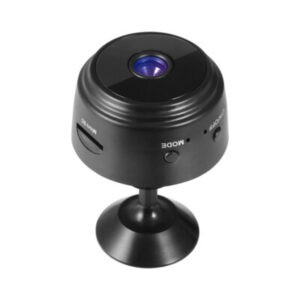The Importance of Language Labs and Language Lab Software in Modern Education
In the fast-evolving world of education, one key area that has seen significant transformation is language learning. With the advent...
In the fast-evolving world of education, one key area that has seen significant transformation is language learning. With the advent of technology, traditional language classrooms have evolved into more interactive, engaging, and efficient environments. One of the most notable advancements in this regard is the development of language labs and language lab software, which have revolutionized the way students acquire language skills.
What is a Language Lab?
A language lab is a specialized classroom or facility designed for the teaching and learning of languages. Traditionally, these labs were equipped with audio equipment, such as tape recorders and headphones, allowing students to listen to and repeat language audio, while teachers could monitor their progress and provide feedback. The primary goal of a language lab is to enhance language acquisition by providing an immersive and controlled learning environment.
Today, language labs have advanced far beyond their basic audio components. Modern language labs are equipped with cutting-edge technology, including computers, multimedia equipment, and internet access, allowing for a much broader range of interactive learning activities. These labs are typically designed to offer both individual and group language learning experiences, helping students improve their speaking, listening, reading, and writing skills in a supportive and dynamic setting.
The Role of Language Lab Software
At the heart of modern language labs lies language lab software, which plays a crucial role in creating a seamless learning experience. This software integrates with the physical equipment in the lab, offering a variety of features that make language learning more effective and personalized. From interactive exercises to real-time feedback and assessments, language lab software transforms the traditional language learning process into a more engaging and efficient one.
Some of the key features of language lab software include:
- Multimedia Support: Language lab software often includes a wide range of multimedia content, such as audio, video, and interactive exercises, designed to cater to different learning styles. These resources allow students to practice speaking and listening in a variety of contexts, helping them gain a deeper understanding of pronunciation, intonation, and grammar.
- Real-Time Monitoring and Feedback: One of the major advantages of language lab software is that it allows teachers to monitor students’ progress in real-time. Teachers can listen to recordings of students’ speaking exercises, provide immediate feedback, and guide them in the right direction. This individual attention helps students improve their skills more effectively.
- Speech Recognition Technology: Many language lab software programs include speech recognition technology, which helps students work on their pronunciation. By comparing a student’s speech to the correct pronunciation, the software can provide feedback on areas that need improvement, ensuring that students develop accurate and confident speaking skills.
- Interactive Exercises and Assessments: Language lab software often includes a variety of interactive exercises, such as quizzes, vocabulary drills, and grammar activities. These exercises provide students with immediate feedback, allowing them to track their progress and focus on areas where they need more practice.
- Collaborative Learning: Many language lab software programs facilitate collaborative learning by enabling students to engage in group activities. This fosters communication and interaction among students, making language learning more social and engaging. Collaboration also encourages peer-to-peer learning, which can enhance the overall learning experience.
Benefits of Language Labs and Language Lab Software
The integration of language labs and language lab software into language education offers numerous benefits to both students and teachers.
- Enhanced Learning Experience: With the combination of multimedia resources and interactive tools, language labs provide an immersive and stimulating learning environment. Students are more engaged in their studies, which leads to improved retention and greater proficiency in the language.
- Personalized Learning: One of the main advantages of language lab software is the ability to tailor the learning experience to individual students’ needs. Whether students need more practice with pronunciation, grammar, or listening comprehension, the software can provide customized exercises to address their specific challenges.
- Improved Speaking and Listening Skills: The focus on listening and speaking in language labs helps students develop their communication skills in a more natural and authentic way. By repeatedly listening to native speakers and practicing pronunciation in a controlled environment, students gain the confidence to use the language in real-life situations.
- Efficient Use of Time: Language lab software allows for more efficient use of classroom time. Teachers can assign tasks and monitor progress without being tied down to individual student assessments, leaving more time for interactive lessons and collaborative activities.
- Increased Motivation: The interactive nature of language lab software helps maintain students’ interest and motivation. With gamified elements, progress tracking, and instant feedback, students are more likely to stay engaged in their language learning journey.
Conclusion
Incorporating language labs and language lab software into language education has transformed the way languages are taught and learned. The combination of advanced technology and interactive learning tools creates an environment where students can improve their language skills efficiently and effectively. By offering real-time feedback, personalized learning, and immersive experiences, language labs play a critical role in preparing students for a globalized world where multilingualism is becoming increasingly valuable. As technology continues to evolve, the future of language learning will undoubtedly see even greater innovations in language lab software, further enhancing the educational experience for students around the world.





